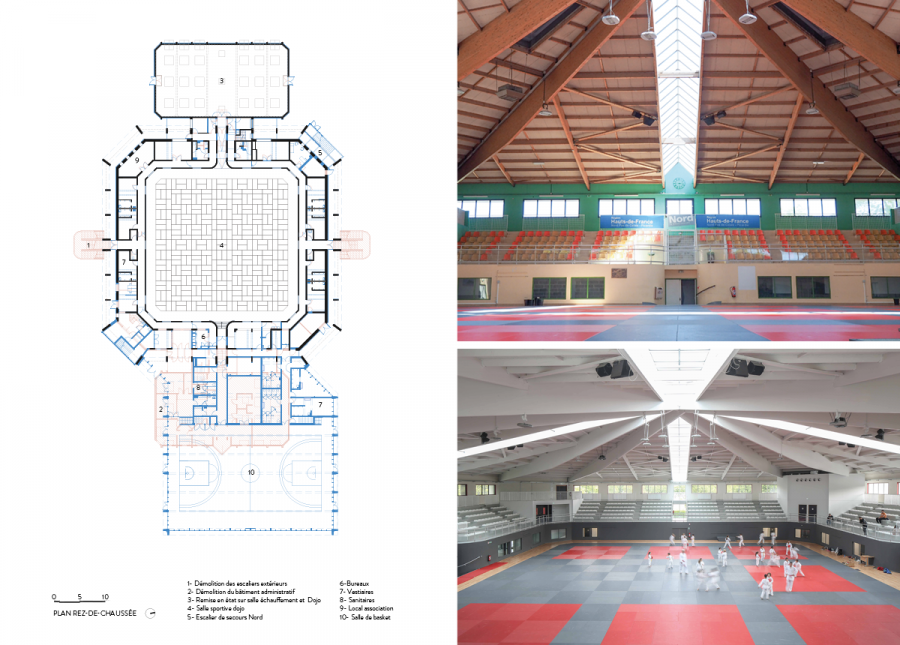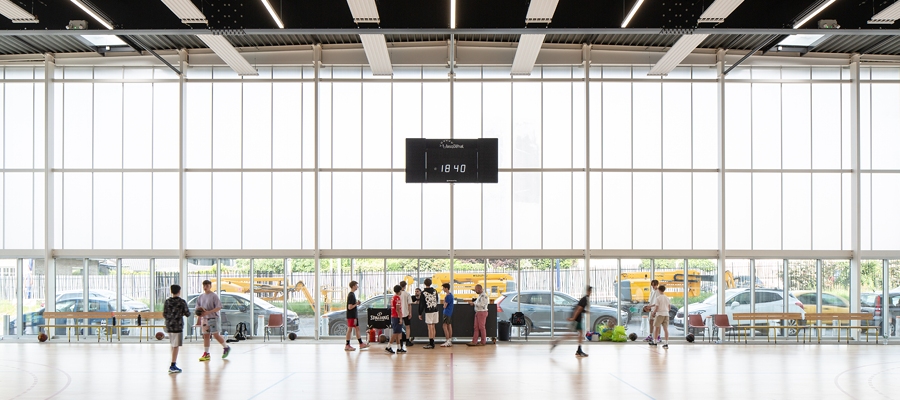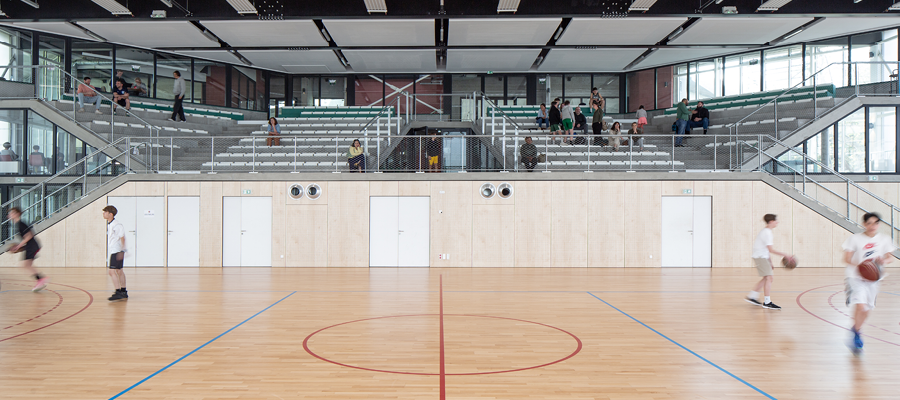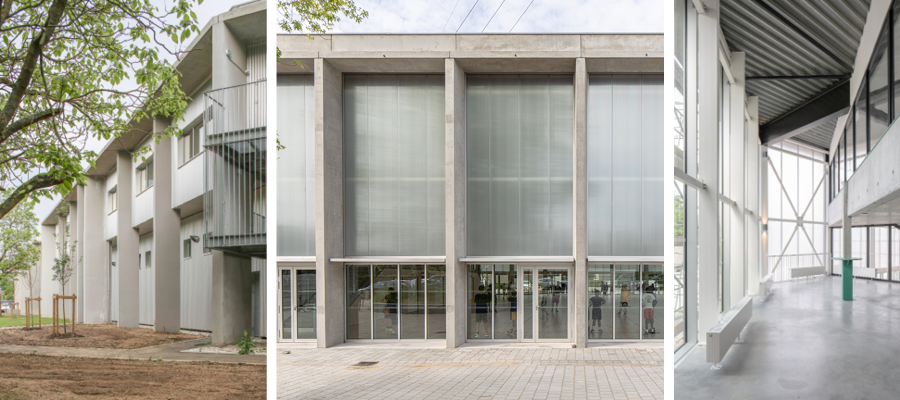Interview with bureau faceB, AMO 2024 Jury’s Grand Prize
AMO 2024 Awards were announced on October 14, 2024. Winners of the ‘Most beautiful metamorphosis’ prize, with Wasquehal town council for the renovation-extension of the departmental dojo, bureau faceB (Camille Mourier and Germain Pluvinage) also won the Jury’s Grand Prize. Read below an interview with the architects, published in the AMO 2024 booklet.
What qualities did this 1980s dojo have when you first visited it, knowing it was in very poor condition when you discovered it?
The dojo’s architecture reflected the 1980s. The sparring hall, with opaque façades, did not open onto the outdoor spaces and was therefore introverted. Although it was less than forty years old at the time of the competition, the building was suffering from serious pathologies: the concrete elements were bursting due to steel corrosion, which was too lightly coated, the piers were cracking, infiltrations were appearing, and so on. Also, its juxtaposition with a skating rink and a funeral home made its urban integration unpleasant. Despite being familiar to judokas in the region, the dojo was criticised for its degraded and unattractive appearance. Nevertheless, the current dojo remains a building with a strong design, which draws its power from the radicalness of its original geometry: a square plan, a radial grid dedicated to supporting rows and an east-west axis connecting the different pavilions together.
Between renovation and transformation, what is this metamorphosis about?
The aim of the renovation was to radically change the way the building is perceived, while taking advantage of the existing uses. The exoskeleton of the dojo’s concrete structure, as well as the gutters overhanging the roof, were in a very bad condition, with the unprotected steel at the top of the posts corroding and causing the concrete to split. To solve the problem, we installed a precast concrete L-shaped coping that supports the waterproofing of the new gutter and masks the original roof slopes, thus unifying the existing structure and the extension. The extension structure is based on the tatami module, with prefabricated concrete posts matching the dojo’s exoskeleton. It aims to combine the finesse of the façades with the raw concrete through a transparent effect. As the communal quarters and grandstands are located ‘at the back’ of the dojo, this layout frees up the three façades of the sports hall. In contrast to the existing hall, it opens up to the city.
Are you used to such transformations, and how has this one enriched your experience?
In many ways, this project was a premiere. It began in 2017 with the design competition, with the completion phase then planned for November 2023. Containing the cost of the project was the main challenge. Firstly, because of an insufficient diagnosis, which underestimated the concrete pathologies in the existing dojo. Secondly, the construction site, which was originally scheduled to last two years in order to maintain the site in activity, was hit by two crises: the COVID 19 lockdown and the materials cost inflation due to the war in Ukraine. Thanks to open, direct and constructive discussions with our client, the project benefited from a budget increase and made progress, while improving. In our opinion, this project is a study case for the renovation of under-valued heritage built in the 1980s and 1990s.
Discover the full AMO 2024 booklet below:





